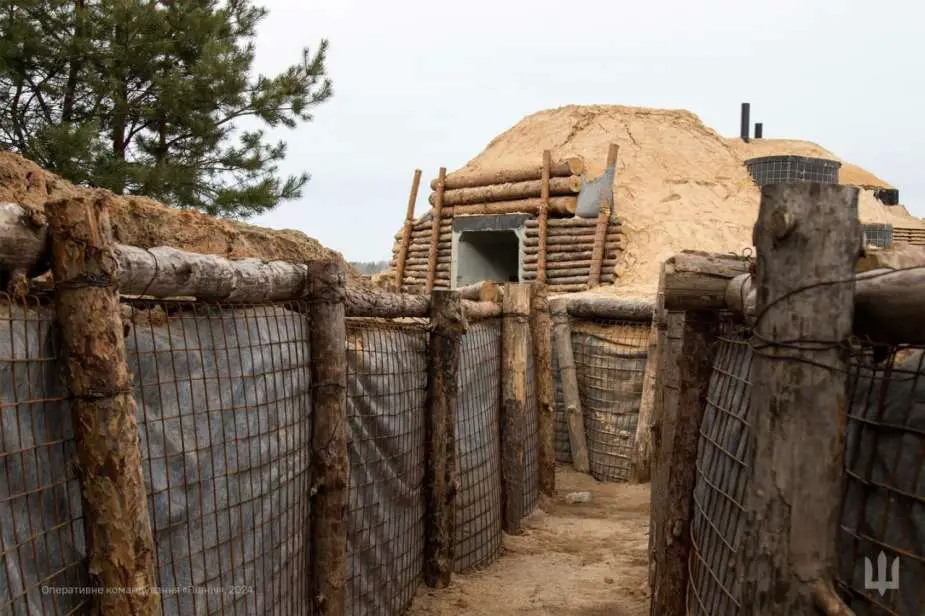- Army
- Conflicts in the world
- Israel - Iran conflict 2025
- Pakistan - India Conflict 2025
- Russia Ukraine War 2022
- Libya conflict day by day
- HAMAS - Israel War 2023
- Operation Serval in Mali French Army
- Sangaris operation Central African Republic
- Sangaris opération militaire République Centreafrique
- Ukraine - Russia conflict
- Syria conflict news
- Defence & Security Industry Technology
- Armies in the world
- Analysis Defense and Security Industry
- Conflicts in the world
- Navy
- Air
Ukraine Builds New Fortification Line Against Russian Advance
On March 27, 2024, Ukrainian President Volodymyr Zelensky visited the defensive installations set up by Ukraine in anticipation of a massive attack by Russian forces, which have recently made slight advancements in the Advikva sector. This article provides an overview of the defensive measures the Ukrainian army has implemented and plans to deploy to halt or even completely stop the Russian advance on their territory.
Follow Army Recognition on Google News at this link

Ukrainian President Volodymyr Zelensky visited the defensive installations set up by Ukraine. (Picture source: Ukrainian MoD)
In the conflict between Ukraine and Russia, fortifications play a crucial role. As the warmer weather approaches, bringing the potential for new waves of Russian offensives, Ukrainians have erected an impressive series of fortifications. These defenses include trenches, barbed wires, anti-tank ditches, dragon teeth, and bunkers, often arranged in parallel lines to enhance their effectiveness.
The landscape of war is marked by defensive structures designed to slow down the Russian advance, channel them into areas advantageous for Ukrainian forces, and subject them to repeated counter-attacks. Among these structures are trenches dug in zigzag or angular patterns to limit enemy visibility and offer additional protection against shell fragments. Moreover, various obstacles such as ditches and concrete barriers aim to restrict the mobility of opposing forces, especially armored vehicles and tanks.
Offensive and defensive strategies in this conflict are influenced by several factors, including technology, geography, and weather. For instance, technologies that increase military mobility often favor the offense, while those reducing mobility, like land mines and trenches, tend to benefit the defense. Similarly, geography plays a crucial role, with open terrains favoring offense and difficult terrains strengthening defense. Additionally, weather conditions, such as mud seasons and cold winters, can sway the advantage between offense and defense.
In a recent communication via Telegram, President Zelensky revealed that Ukraine is constructing an extensive network of defensive fortifications spanning over 2,000 kilometers. This initiative comes after criticisms in late 2023 regarding the slow progress in reinforcing the country's defensive lines. In response, the Ukrainian government initiated a special task force in November dedicated to streamlining and accelerating the fortification process.
Prime Minister Denys Shmyhal shared in January that the government had allocated a historic sum of approximately 17.5 billion hryvnias ($466 million) to this project, highlighting the unprecedented scale and ambition of the initiative. Zelensky noted the satisfactory progress in constructing these extensive defense mechanisms across three main lines of defense.
Additionally, Zelensky was thoroughly briefed on the current front-line conditions, as well as updates on ammunition supply chains to the battlefield by Defense Minister Rustem Umerov and Strategic Industries Minister Oleksandr Kamyshin.
Further reports by The Wall Street Journal on March 7 emphasized the urgency of these fortification efforts, with Ukrainian forces actively preparing for a possible Russian offensive anticipated in the spring. However, concerns remain about the speed at which these crucial defenses are being established, highlighting the challenges Ukraine faces in its ongoing conflict with Russia.
As for Russia, it relies not on technology but on mass and its ability to produce more material than Ukraine. Many now fear a massive Russian offensive with the return of warmer weather. However, Ukrainians seem to be preparing and are firmly waiting for Russian forces. The failed Ukrainian counteroffensive in the summer of 2023, which was effectively contained by Russian defenses, serves as a lesson that Ukrainians appear to have learned and are now even applying to their military doctrine. It remains to be seen whether their efforts will be sufficient in the coming months, so the situation continues to develop.


























